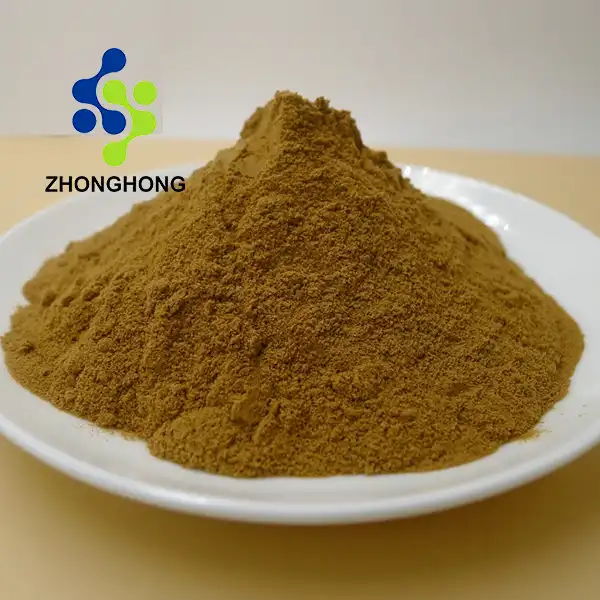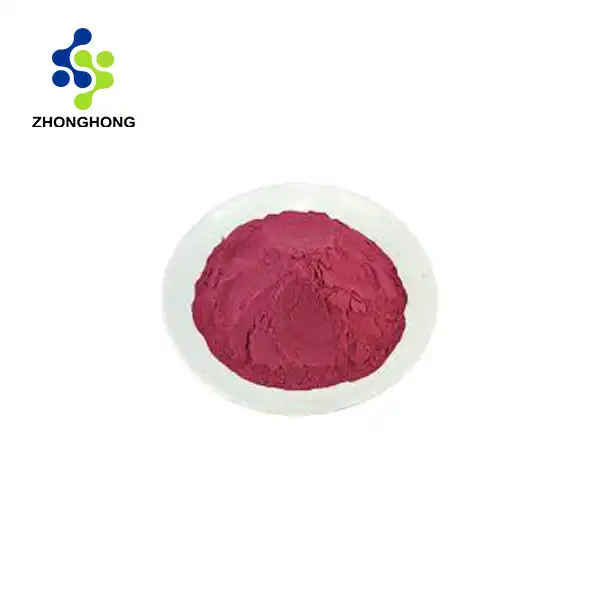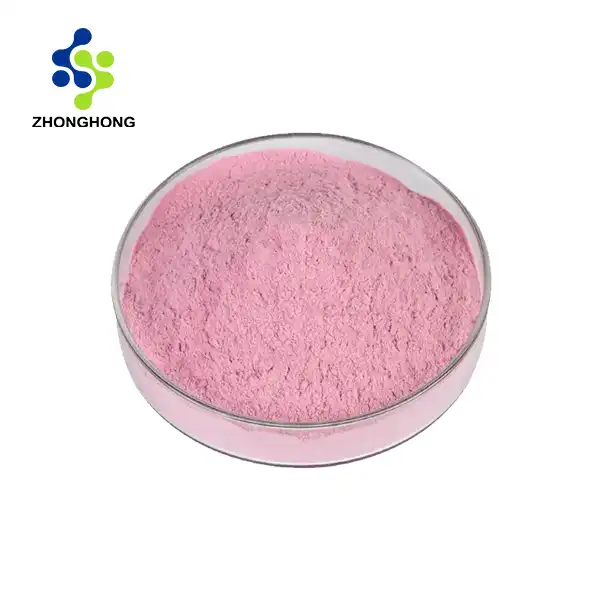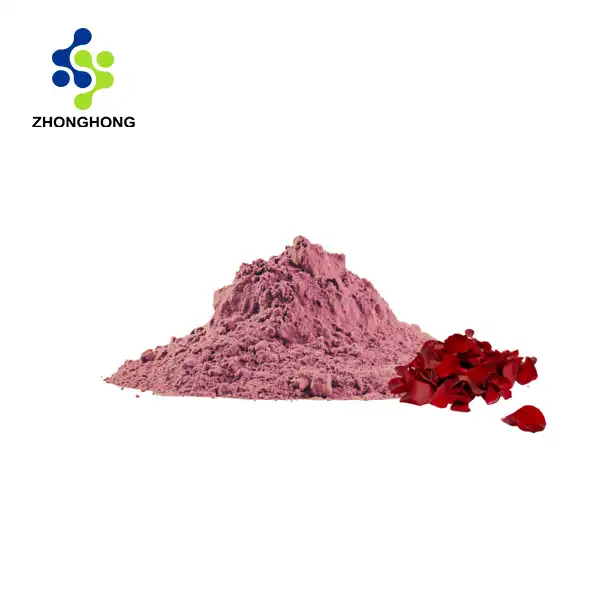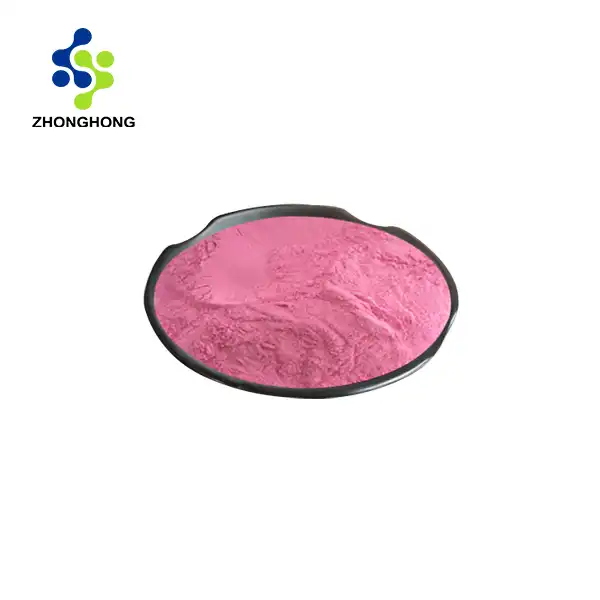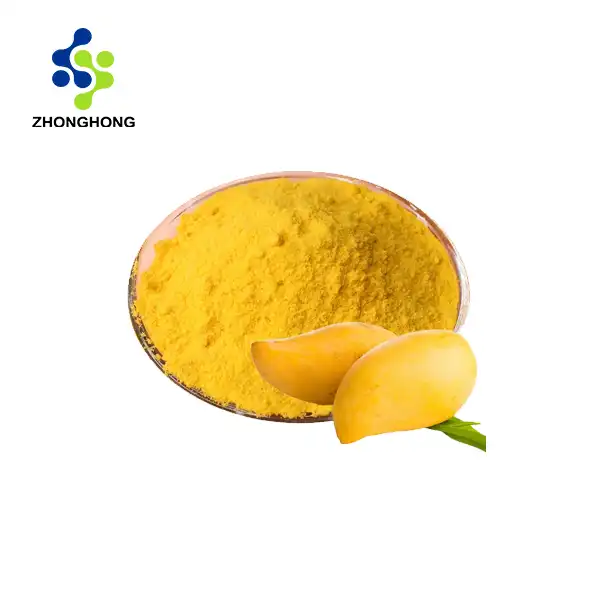English synonym Olive leaf Ext; Olive Leaf (Europe) Extract; Poultry feed Olive leaf extract oleuropein powder Oleuropein; Olive leaf extract powder
Purity: 99%
CAS:32619-42-4
Purity: 10:1 oleuropein 10% -80%
Packaging information: 1KG/cardboard drum
Remarks: The manufacturer's direct sales specifications are complete, with excellent quality and price
It has antioxidant, antibacterial, anti-inflammatory, blood pressure lowering, blood glucose lowering, anti-tumor, and cardiovascular health improving effects.
function
Folding broad-spectrum antibacterial effect
The possible mechanism is as follows:
Serious interference with certain amino acid patterns necessary for the growth of a particular virus, bacteria, or microorganism;
Interfering with viral infection and/or transmission by inactivating the virus or preventing virus molting, germination, or germination on the cell membrane;
Direct infiltration into infected cells and irreversible inhibition of microbial replication;
Neutralizing the reverse transcriptase and protease products of retroviruses.
Olive leaf extract has a strong effect on both infectious and malignant microorganisms. It can stop attacks such as colds and other viral diseases, fungal, fungal, and yeast invasion, mild and severe bacterial infections, and protozoan infections. Not only preventive, olive leaf extract provides a safe and effective treatment method in the battle against microorganisms. The study also demonstrated that the extract only attacks pathogens and is harmless to gut bacteria that coexist in the human body, which is another advantage over artificial antibiotics.
Folding antioxidant effect
Olive bitter glycoside can protect skin cells from UV damage, prevent the breakdown of skin membrane lipids by UV, promote the production of collagen protein by fibroblasts, reduce the secretion of collagen enzyme by fibroblasts, and prevent the anti glycan reaction of cell membranes, thereby highly protecting fibroblasts and naturally resisting skin damage caused by oxidation. It is also protected from UV damage, effectively maintaining skin softness and elasticity, and achieving the effects of skin care and rejuvenation.
Folding strengthens the immune system
Some physicians have successfully used olive leaf extract in the treatment of medically unexplained diseases such as chronic fatigue syndrome and muscle fiber pain patients. This may be the result of its direct stimulation of the immune system.
Folding cardiovascular disease
Some cardiovascular diseases have also received good responses after using olive leaf extract. Coronary heart disease seems to have achieved a good response after treatment with olive leaf extract. According to laboratory and preliminary clinical studies, olive leaf extract can alleviate discomfort caused by insufficient arterial flow, including angina and intermittent claudication. It helps to eliminate atrial fibrillation (arrhythmia), reduce hypertension, and inhibit the production of LDL cholesterol through oxidation.
chemical composition
So far, the main components isolated from olive leaves include flavonoids, terpenes and their derivatives, aromatic compounds, aliphatic compounds, etc. Among them, flavonoids, terpenes and their derivatives are the main active ingredients.
1. Flavonoids
The main glycosides of flavonoids isolated from olive leaves are luteolin, apigenin, and cilantroflavin. The sugar chain is mostly composed of 1-2 sugars, with common sugars being glucose and rutin. The connecting positions are mostly at the 7 and 4 'positions of the glycosides. Currently, about 20 types of flavonoids have been isolated.
2. Terpenes and their derivatives
Terpene compounds and their derivatives are commonly present in olive leaves, with particularly high levels of cyclohexene ether terpenes and terpenes.
(1) Secoiridoids: Secoiridoids are a class of compounds in the cyclopentane monoterpene derivatives, which are formed by ring splitting of cyclohexene ether terpenes and account for only a small portion of cyclohexene ether terpenes. Olive bitter glycoside is the most representative compound of cyclohexene ether terpenes, and is an important phenolic cyclohexene ether terpenoid glycoside with many pharmacological activities. In addition, oleuropein can be hydrolyzed to obtain free hydroxytyrosol.
(2) Triterpenes: The triterpenoids found in olive leaves are mainly pentacyclic triterpenes, with oleanane type being the most representative, such as oleanolic acid and hawthorn acid.
3. Phenolic acid compounds
Phenolic acid compounds are a class of organic acids with phenolic hydroxyl groups. Phenolic acid components include oxalic acid, caffeic acid, chlorogenic acid, gallic acid, cinnamic acid, p-hydroxycinnamic acid, 3,4-dihydroxybenzoic acid, and 3-hydroxy-4-methoxybenzoic acid.
4. Aliphatic compounds
There are mainly 3-hexen-1-ol, orange blossom tertiary alcohol, nonanal, phenylacetaldehyde, etc.
pharmacological action
1. Antioxidant effect
The total polyphenols and individual phenolic compounds such as oleuropein, rutin, caffeic acid, etc. in olive leaf extract have strong scavenging effects on nitrite and DPPH free radicals, and can also increase the activity of superoxide dismutase (SOD). Olive bitter glycoside is an important antioxidant active ingredient in olive leaves, which has a certain protective effect on oxidative myocardial injury caused by local ischemia and reperfusion. Treatment with olive bitter glycoside in rats can increase cholesterol levels in the animal heart. In addition, in the study of in vitro and in vivo antioxidant activity of oleuropein, it was found that oleuropein has a significant inhibitory effect on light emission, and is stronger than the commonly used antioxidant Trolox.
2. Antibacterial effect
Olivuropein and tyrosol isolated from olive leaves have extensive antibacterial activity. Studies have shown that olivuropein and tyrosol have inhibitory effects on 5 ATCC standard strains (Haemophilus influenzae strain ATCC9006, Haemophilus mucosae strain ATCC8176, Vibrio cholerae strain ATCC906, paratyphoid fever type B strain ATCC6539, and Staphylococcus aureus strain ATCC25923) and 44 clinically isolated strains (8 Haemophilus influenzae strains, 6 Haemophilus mucosae strains, 4 Vibrio cholerae strains, 5 penicillin sensitive strains, 6 penicillin tolerant strains, and 15 Salmonella strains).
3. Hypoglycemic effect
Olive leaf extract has significant therapeutic effects in lowering blood sugar and anti hypertension, and its main active ingredients are iridoid compounds such as Oleuropein oleanolic acid. After administration of 20 mg/kg oleuropicrin to diabetes rabbits, within 16 weeks, malondialdehyde, blood glucose and most of the enzyme and non enzyme antioxidants were significantly restored to the same level as normal rabbits. Olive leaf extract can improve the body's sensitivity to insulin and eliminate tissue cell resistance to insulin, but its specific hypoglycemic mechanism is still unclear. Both the alcohol extract and ester extract of olive leaf can reduce the blood sugar level of diabetes model mice, and the effect of ester extract is significantly stronger than that of alcohol extract. The ester extract of olive leaf can resist the increase of total cholesterol, triglyceride and low-density lipoprotein cholesterol in the serum of diabetes model mice. In addition, the study found that olive leaf extract can inhibit the nerve damage caused by hyperglycemia, alleviate the thermal hyperalgesia caused by diabetes, and can be used to treat the neuralgia caused by diabetes.
4. Effects on the cardiovascular system
The effect on the heart is that oleuropein in olive leaf extract has a significant protective effect on the heart, mainly manifested as anti acute doxorubicin cardiac toxicity and anti ischemia. Olive bitter glycoside can also increase coronary blood flow by 50% in isolated rabbit hearts and exhibit antiarrhythmic and antispasmodic effects. Olive bitter glycoside can reduce blood pressure in the N-nitro-L-arginine methyl ester induced hypertension model of Wistar rats without significant changes in heart rate. Olive acid obtained by hydrolyzing olive leaf extract with phosphoric acid also has a hypotensive effect.
The effect on blood vessels Many secoiridoid glycosides (including oleuropicroside) are strong angiotensin converting enzyme inhibitors. Their inhibitory effect comes from the highly reactive 2, 3-dihydroxyglutaraldehyde structure. The corresponding aglycones produced by enzymatic hydrolysis show similar effects to Oceanein. They have a lasting antihypertensive effect on rats, cats and dogs (IC50 is 26 μ mol/L), can reduce the oxidation of low-density lipoprotein, and prevent coronary heart disease and atherosclerosis; Olive bitter glycoside has a relaxing effect on the isolated mouse aorta. In addition, olive leaf extract can effectively inhibit platelet aggregation, which may be related to its strong antioxidant properties and ability to clear H2O2.
5. Antitumor effect
Olive bitter glycoside is a highly effective anti-cancer compound that can directly destroy actin microfilaments in cellular and non cellular assays, inhibiting tumor cell line proliferation and migration in a dose-dependent manner; Can irreversibly surround cancer cells, preventing their replication, movement, and invasion. After oral administration of oleuropein to mice with spontaneous tumors for 9-12 days, the tumors can completely regress.
6. Anti inflammatory effect
Olive leaf extract has good anti-inflammatory and analgesic effects. Orally administering OLE100, 250, and 500 mg/kg body weight to rats with acute inflammation induced by carrageenan can significantly reduce hind foot swelling, increase pain threshold, and significantly reduce the mRNA expression of inflammatory factors TNF - α and IL-1 β.
7. Antiviral effect
The various chemical components in olive leaf extract, such as total flavonoids and oleuropein, have good antiviral effects. Among them, oleuropein has the most prominent effect, which can effectively inhibit the fusion and integration of hemorrhagic septicemia virus (VHSV), HIV-1, HBV and other viruses. Water and alcohol extracts of olive leaves are used to combat malaria and other diseases caused by bacteria, fungi, and viruses, such as cold or hot influenza; In clinical practice, as a drug, it can inhibit viruses, bacteria, microorganisms and their toxins, enhance the regenerative ability of T lymphocytes, NK cells, phagocytes, etc., and strengthen the immune ability of cells against viral infections.
8. Other functions
The extract of olive leaves also has functions such as DNA protection, neuroprotection, immune enhancement, and regulation of the endocrine system. Olive bitter glycoside can activate gastric protease, while inhibiting lipase, glycerol dehydrogenase, glycerol triphosphate dehydrogenase, etc. to participate in the metabolism of proteins, carbohydrates, and lipids; Olive leaf extract can protect against lung damage caused by heroin and has a certain therapeutic effect on lead poisoned mice. It can alleviate hippocampal lipid peroxidation damage caused by lead poisoning, affect muscle tissue DNA methylation levels, retinal structure, spleen and thymus cell cycle processes, prevent the toxic effects of lead on muscles, retina, spleen and thymus, and improve renal function in lead infected mice; The combined use of methadone can significantly reduce the levels of E2, FSH, and P in the plasma of heroin dependent rats, increase the levels of PRL and LH, and reduce the number of ovarian VEGF positive cells. The effect is significantly better than that of the drug treatment group alone; Repair experimental rabbit joint cartilage injuries, etc.
Extraction and Separation
1. Through single factor experiments and orthogonal experiments optimization, with the content of hydroxytyrosol as the evaluation index, the optimal process for ultrasound assisted phosphate extraction of hydroxytyrosol from olive leaves was determined as follows: phosphate concentration of 2 mol/L, liquid to material ratio of 40:1, ultrasound time of 60 min. Under these conditions, the content of hydroxytyrosol was 5.13 mg/g. This method has a simple process and a large processing capacity, which can provide a basis for the extraction of hydroxytyrosol from olive leaves.
2. The optimal process for enzymatic extraction of hydroxytyrosol from olive leaves was obtained through single factor and orthogonal experiments. The enzymatic hydrolysis time was 80 min, pH value was 7, temperature was 40 ℃, and enzyme concentration was 30 μ g/mL. Under these conditions, the hydroxytyrosol content obtained was 3.72 mg/g.
3. Ethanol solvent extraction method was used to extract polyphenols from olive leaves in Guangyuan area. Under the conditions of a solid-liquid ratio of 1:35 g/ml, ethanol volume fraction of 60%, extraction temperature of 55 ℃, and extraction time of 1.75 h, the polyphenol extraction amount from olive leaves was 57.22 mg/g.
4. Using olive leaves as raw material, rutin as control, ethanol volume fraction, extraction temperature, solid-liquid ratio, reflux time as evaluation factors, and total flavonoid extraction rate as index, the optimal extraction process was selected through single factor experiment and orthogonal experimental design as follows: ethanol volume fraction of 90%, extraction temperature of 60 ℃, solid-liquid ratio of 1:19, reflux time of 1.5 h. Under these conditions, the extraction rate of total flavonoids was 2.280%. This extraction process is reasonable and simple, and can be used for large-scale production.
5. Supercritical CO2 extraction technology was used to extract olive leaves. Through single factor and orthogonal experiments, the optimized extraction conditions were obtained as follows: extraction pressure of 25 MPa, extraction temperature of 45 ℃, separation temperature of 45 ℃, extraction time of 4 hours, and CO2 flow rate of 30 kg/h. Under these conditions, the yield of oleuropein was 0.435%.
application
In addition to consumption, olive oil is also widely used for beauty, weight loss, and prevention and treatment of cardiovascular diseases; It has a unique effect on preventing and treating digestive system diseases in the elderly, promoting brain and bone development in infants and young children; It also has the function of resisting viral infections and various inflammatory diseases; When making bath products and cosmetics, they are beneficial for skincare, fitness, and anti-aging, and are known as the "oil of beauty". As an industrial use, it is a high-grade illuminating oil for textiles and printing and dyeing, and also a high-grade lubricating and maintenance oil for electronic instruments.
Toxicological research
Conduct acute oral toxicity test, Ames test, mouse bone marrow micronucleus test, mouse sperm abnormality test, and rat 90 day feeding test in accordance with the G1B5193-2003 Food Safety Toxicology Evaluation Procedure and Method of the Ministry of Health. Both male and female mice have oral MTD values greater than 15g/kg. Olive leaf extract at a concentration of 5000 μ g/dish, with or without S9, showed no significant mutagenic activity against standard test bacteria TA97, TA98, TA100, and TA102. At a dose of 10g/kg of olive leaf extract, no micronucleus inducing effect was detected on the bone marrow of male and female mice, and no mutagenic activity was detected on the sperm of male mice. Rats were fed with 750500 and 3000 mg/kg olive leaf extract mixed with human basic feed for 90 days. During this period, the activity and growth of rats in each dose group were normal, and there were no animal deaths, refusal to eat, or other abnormal behaviors. There was no significant difference (P>0.05) in weekly body weight, total food intake, and total food utilization rate between male rats in each dose group and the control group; There was no significant difference (P>0.05) in the absolute weight and organ to body ratio of brain, heart, liver, spleen, kidney, adrenal gland, lung, thymus, ovary, testis and other organs between male and female rats in each dose group and the control group; The hematological values of WBC, RBC, HB, NE, LY, MO, EO, BA during the mid to late stages of feeding in both male and female dose groups, as well as the biochemical indicators of AST, ALT, BUN, CR, CHO, TG, GLU, TP, and ALB during the late stages of feeding, were within normal fluctuation ranges. No histopathological changes related to olive leaf extract were observed in the brain, cerebellum, heart, lungs, liver, spleen, stomach, duodenum, kidney, adrenal gland, thymus, testes, ovaries, and uterus of rats in the high-dose group. Therefore, olive leaf extract is classified as non-toxic and has not shown any potential mutagenic effects. The maximum observed adverse effect doses (NOALEs) of olive leaf extract consumed by male and female rats in a 90 day feeding experiment were 2912 and 2513 mg/kg body weight, respectively.
_1728976869676.webp)
